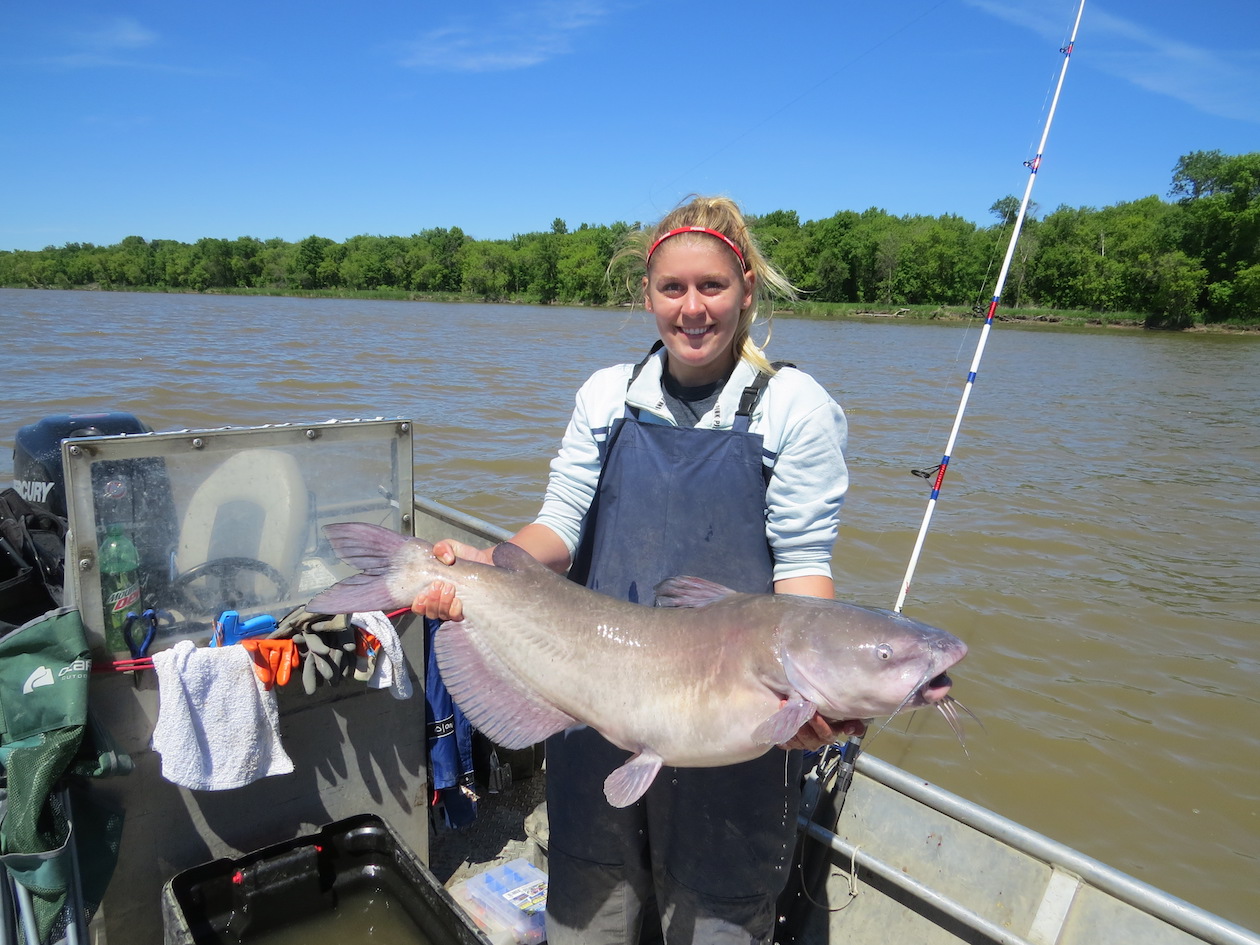
About 40 percent of attendees at the 77th Midwest Fish and Wildlife Conference were students from more than 40 colleges or universities in the Midwest.
They didn’t just attend. They played a major role, and SNR students were no different.
Of the 35 technical talks presented by SNR faculty and students, more than 25 were delivered by undergraduate or graduate students. Of more than 100 posters displayed at the event, 14 were by SNR students highlighting their research.
They took the opportunity seriously.
Early Tuesday morning, McKenzie Hauger, SNR fisheries and wildlife major, delivered her talk on aging methods of black crappie to a room full of fisheries professionals and students.
Proper aging is important in understanding population cycles and helps manage fish populations, she said, and so for her research, she decided to compare aging methods on the black crappie population on North Cross Lake in Manitoba, Canada, where little research on the sportfish had yet been conducted.
“According to literature, black crappie are a native species there,” she said. “But according to people, it’s new.” The lack of reliable information about the population made the study more important to fisheries and habitat managers there.
For her research, Hauger compared lethal methods of aging fish (harvesting and examining ear bone) to nonlethal methods (extracting samples from pectoral fin rays and dorsal spines). Sixty-five fish were caught during the study, and two researchers, one experienced and one not, aged the fish based on samples retrieved.
The average age of fish where ear bones or dorsal spines were used was 4. The average age of fish when pectoral fin rays were used was 3; this method was determined to be the least reliable aging method.
Harvesting the ear bones, the most reliable method, had a 77 percent match within one age class with the dorsal fin method.
“With a willingness to accept plus or minus in age class, we could use spines as an aging structure, especially when comparing lethal with nonlethal methods,” Hauge said. “But spines and fin rays took a lot longer to prepare, so if time is a factor, the otolith (ear bone) might be a better option.”
No matter the case, Hauge said, training on each method is necessary to identify the correct ages among the structure options.
Want to know who else spoke?
Get a complete list of technical and poster presenters at https://midwestfishwildlifeconferen2017.sched.com/.
Shawna Richter-Ryerson, Natural Resources